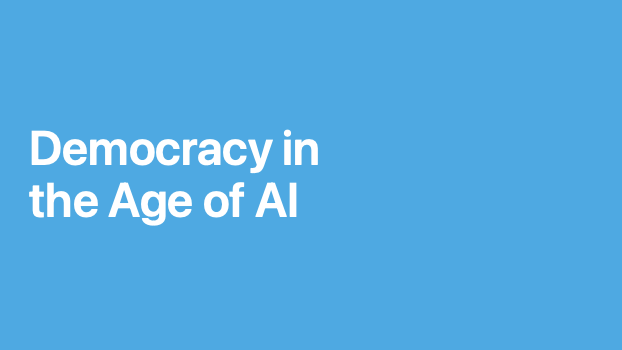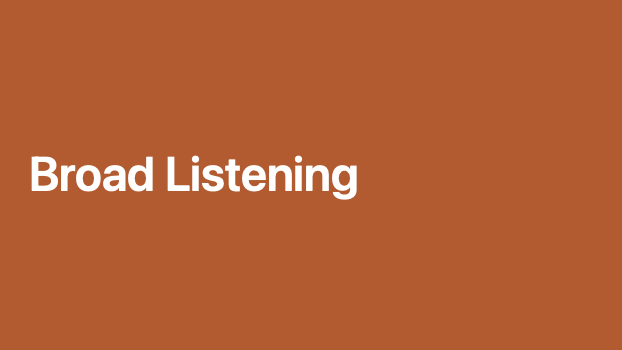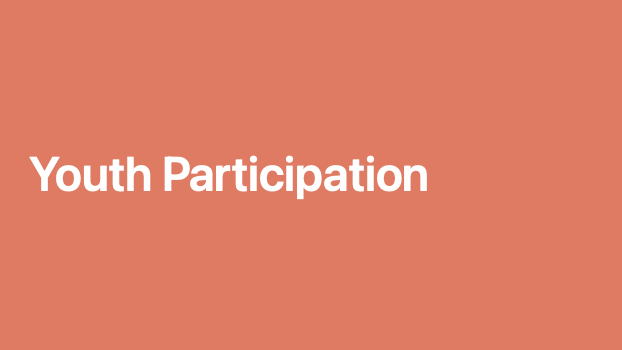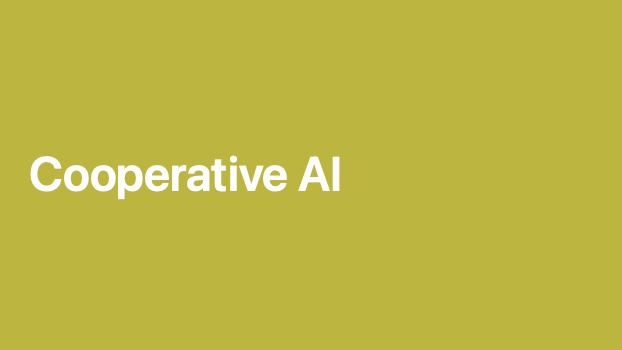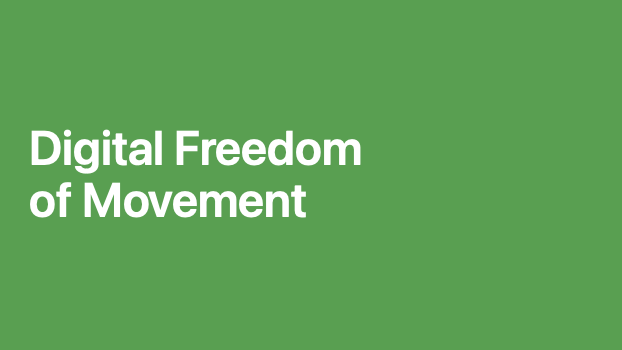Democracy in the Age of AI
Good local time everyone. I'm Audrey Tang, 🇹🇼Taiwan's cyber ambassador and first digital minister.
Today, when we talk about "AI" and "democracy," two very different pictures may come to mind.
The first is a pessimistic one. We see AI algorithms on social media pushing divisive, polarizing content. These algorithms shove us into echo chambers, making dialogue feel increasingly impossible. We see democracy itself being hacked by AI.
But there's another picture—an optimistic one. Here, AI isn't a weapon that creates division, but a tool that builds bridges. It helps us span our differences, find uncommon ground, and make democracy more authentic and more resilient.
Many people feel that with the rapid advance of AI, our future is like a car with only a gas pedal and a brake. We can either floor it toward some unknown "Singularity" utopia, or we can slam on the brakes for fear of a dystopian future.
But we've overlooked the most important part: the steering wheel.
Today, I want to share the story of that steering wheel. It's the focus of my research here at Oxford: Cooperative AI. It's how we, together, can steer our future down the right path.
Democracy Hacked
This isn't a metaphor. It's our reality. Around 2015, the social media giants quietly changed their default setting from "Following"—a reality you and I could share—to "For You"—a feed of the stickiest content an AI could find.
The "Following" feed creates a "For Us" reality. If you and I follow the same people, we see largely the same world. We live in a shared reality.
But "For You" is different. The AI behind it is a parasitic AI. Its sole purpose is to learn what keeps you addicted and glues you to the screen. As a result, everyone lives in a hyper-personalized world, tailored just for them.
The result? Not just addiction, but division. The content that best holds your attention is often the content that makes you angry. This design is easily exploited by authoritarian regimes, which use malicious AI swarms to wage psychological warfare in our public square.
Their goal is simple: to make us doubt our institutions, despise our neighbors, and believe that democracy only brings chaos. When people are exhausted enough to give up, they become easy for authoritarians to control.
Engagement through Enragement
So-called "social networks" have largely become an infrastructure for outrage. They take the most valuable thing in society—our connections—and sell them to the highest bidder. They know our preferences, our fears, and our identities with precision, but this is information we ourselves cannot see.
This is the crisis many democracies face today. It’s not that we lack good people or people willing to talk. It's that the tools we use are, by design, discouraging us from doing so.
So, what can we do? Do we just have to abandon these platforms?
No. We can flip the algorithm. We need to re-architect these systems so they are built not for outrage, but for cooperation—and are inherently resistant to manipulation.
From Protest to Demo
The catalyst for this change came a decade ago. In 2014, Taiwan's Sunflower Movement saw many people occupy our parliament in protest.
But what made this movement unique wasn't just the protest; it was the demo. On-site, there was a group of civic-tech experts like myself. We didn't spend our time trying to overthrow something; we spent it building something.
We set up internet access to ensure a transparent flow of information. We livestreamed the proceedings so the dialogue inside and outside parliament was synchronized. We didn't just say what we were against; we used code and action to demonstrate what a more open and transparent democracy could look like.
This experience taught us that the energy of a social movement doesn't have to end with a one-off protest. It can be transformed into long-term, institutional construction—moving from the streets to the keyboard.
Bridging Systems
So, what are these tools? The core concept is simple: we need to build "bridging systems."
Let me give you an example. In 2015, Uber entered Taiwan, sparking intense social conflict. On one side were users who supported innovation; on the other were taxi drivers who feared for their livelihoods. The two sides were at war online.
At the time, we introduced a system called Polis. On Polis, you won't find a "reply" button. You can only "agree" or "disagree" with statements others have made.
As you vote, your avatar moves toward the cluster of people who share your views. Soon, you see a map with the main opinion blocs. But here's the crucial design feature: anyone can submit a new idea. If your idea gets "agreement" from people in different blocs, it "bridges" the divide, earns the highest score, and gets seen by the most people.
We flipped the incentive for "going viral." Instead of rewarding the most extreme statements, we rewarded the statements that built the most consensus.
In the end, we found several principles everyone agreed on, such as "taxis should be allowed to have flexible rates," "all vehicles must be insured," and "unlicensed cars cannot be used." This consensus became law. The Uber conflict in Taiwan ended peacefully. This is the process of finding "uncommon ground."
Broad Listening
California has also adopted this model on a large scale with the launch of "Engaged California." Inspired directly by the Taiwanese model, the platform addresses urgent issues like wildfire recovery and government efficiency by involving the public in policymaking.
In a crisis, perfect fairness and universally accepted compromises are nearly impossible. The goal is to build the broadest possible social consensus and prevent the sense of unfairness that can lead to political backlash. How can a government avoid policy blowback and stay aligned with public sentiment? AI offers a solution through what we call broad listening.
The platform works by identifying different demographic groups and determining which policies matter most to each. For example, while only a minority of people might prioritize mental health recovery—making it a tough sell in a traditional budget debate—a consensus metric called the "Ethelo Score" weighs the breadth of support against the level of contention, thereby reducing minority dissatisfaction.
These systems identify priorities with the highest degree of overlap, and AI synthesizes them into viable policy proposals. Initiatives that prove to be highly polarizing are flagged for the next round of deliberation.
Youth Participation
The engine behind all this innovation is the energy and vision of young people.
In Taiwan, the birth of our democracy coincided with the birth of the public internet. Our first direct presidential election was in 1996, the same year web browsers became widespread. For our younger, digital generations, democracy has never been a fixed monument. It has always been like software: something that needs constant debugging, upgrading, and improvement.
On "Join", our national participation platform , citizens can freely propose initiatives. If a proposal gets 5,000 signatures, the relevant government ministry must respond to the arguments for and against.
A few years ago, a group of high school students used this platform to propose that the school day start an hour later, backing their idea with scientific data on adolescent sleep. They gathered the signatures. After months of collaboration, the Ministry of Education implemented the policy nationwide.
Think about that power. It tells every young person: You don't have to wait for the right to vote to have a voice. You have the power to change your country right now. They are not just our future; they are our present. They are the digital-native democrats and the creators of tomorrow's civic core.
And this energy isn't limited to Taiwan. In Japan, we see inspiring figures like Takahiro Anno. This 34-year-old AI engineer and science fiction author is pioneering new paths for digital democracy.
Inspired by the idea of ⿻ Plurality, Anno ran for Governor of Tokyo just one month before the election, forming his policies through broad listening tools and launching the "Digital Democracy 2030 Initiative Japan"—not to create division, but to build a true dialogue between candidates and voters.
Anno represents a new generation of global civic technologists who are building open-source tools for a more participatory and transparent society. With over 2% of the national vote, he has now been elected to the House of Councillors.
Alignment Assemblies
As AI evolves, so do our democratic technologies. Our latest experiment is called the "Alignment Assembly."
Last year, Taiwan was plagued by a flood of "deepfake scam ads." Many public figures, like NVIDIA's CEO Jensen Huang, were impersonated. Society was deeply concerned, but people worried that if the government stepped in to regulate, it could lead to censorship.
What did we do? We sent out random text messages to 200,000 citizens. In the end, 450 people who were demographically representative of Taiwan joined a full-day online assembly. They were divided into 45 small groups of 10, like "citizen juries." With the help of AI facilitators, they brainstormed all kinds of solutions.
For example, one group said: "We shouldn't just fine the platforms; we should make them jointly liable. If someone loses a million dollars to a deepfake investment scam, the platform has to pay them back a million." Another group said: "For platforms without a legal presence in Taiwan, we can gradually throttle their connection speed to limit their traffic."
This wisdom from the people was summarized in real-time by a language model and reported back to all participants. The final policy proposals earned over 85% support across all parties and demographics. From the online assembly to the passage of new law took only a few months, making us the first country in the world to fully implement "real-name advertising." This is a perfect demonstration of AI as Assistive Intelligence.
Cooperative AI
This brings us to our core strategy. We need a vision for AI that grows with us, which we call Cooperative AI.
While much of the safety discussion focuses on the vertical problem of a human controlling an AI, the bigger challenge is the horizontal problem: ensuring a world full of different humans and AIs can cooperate peacefully. Even perfectly "aligned" AIs could be used for conflict if we don't build the right environment for them.
Cooperative AI builds that environment. It’s a field of innovation focused on three key areas: creating AI that improves human cooperation, designing protocols for safe AI-to-AI cooperation, and building the resilient infrastructure for a decentralized, democratic network of agents — AI that can run on your phone, not just in massive data centers. AI whose reasoning process is verifiable and trustworthy.
It's the difference between a pyramid and a network. A pyramid is strong, but its fate is controlled by the very top. A network is resilient, and its strength is distributed across every node. Authoritarianism is a pyramid. Democracy must be a network. A decentralized, symbiotic architecture is our defense.
Digital Freedom of Movement
To transform "anti-social" platforms into "pro-social" public infrastructure, we need three keys:
Social Portability: Your social graph and content must be instantly portable, so you're not held captive by a single platform. Utah has already passed a Digital Choice Act requiring this, which is a vital step toward breaking up monopolies and reducing the attack surface. I call this "digital freedom of movement": your connections and activity are portable and can be synced across platforms.
Bridging-Based Ranking: The Community Notes feature on X uses "helpful to people from different perspectives" as the threshold for display. Evidence shows this reduces the spread of misinformation and increases trust in fact-checks. YouTube and Meta have already begun to follow suit in the U.S.
Sensemaking: Traditional polls often box in the discussion with simplistic questions, ignoring nuanced viewpoints. The "We the People" project, a collaboration between Google and veteran pollster Scott Rasmussen, is bringing together citizens from all 435 U.S. congressional districts. Using AI-assisted interaction with open-ended questions, they are uncovering deep insights and "uncommon ground," allowing minority groups to adjust proposals in real-time to gain broader, more authentic support.

Let's return to the initial question. Faced with the age of AI, should we be optimistic or pessimistic about democracy?
In Silicon Valley, you often hear the phrase, "Singularity is Near."
But I'm here to tell you, "Plurality is Here."
The Singularity is a vertical vision, an exclusive one that leaves most people behind. Plurality is a horizontal vision, an inclusive one that embraces every unique voice.
Democracy itself is a technology: a social technology that allows us to live together with people we disagree with. And any technology can be upgraded.
We don't need to wait for a perfect super-AI to solve all our problems. What we need are better tools to strengthen our civic muscle.
This future will not be decided by a few elites or some superintelligence. It will be decided by every one of you here—by all the citizens who are willing to listen, to engage in dialogue, and to build it with their own hands.
The future is not singular; it is plural.
Thank you. Live long and prosper!
(The contents of this presentation are released into the public domain under CC0 1.0.)
